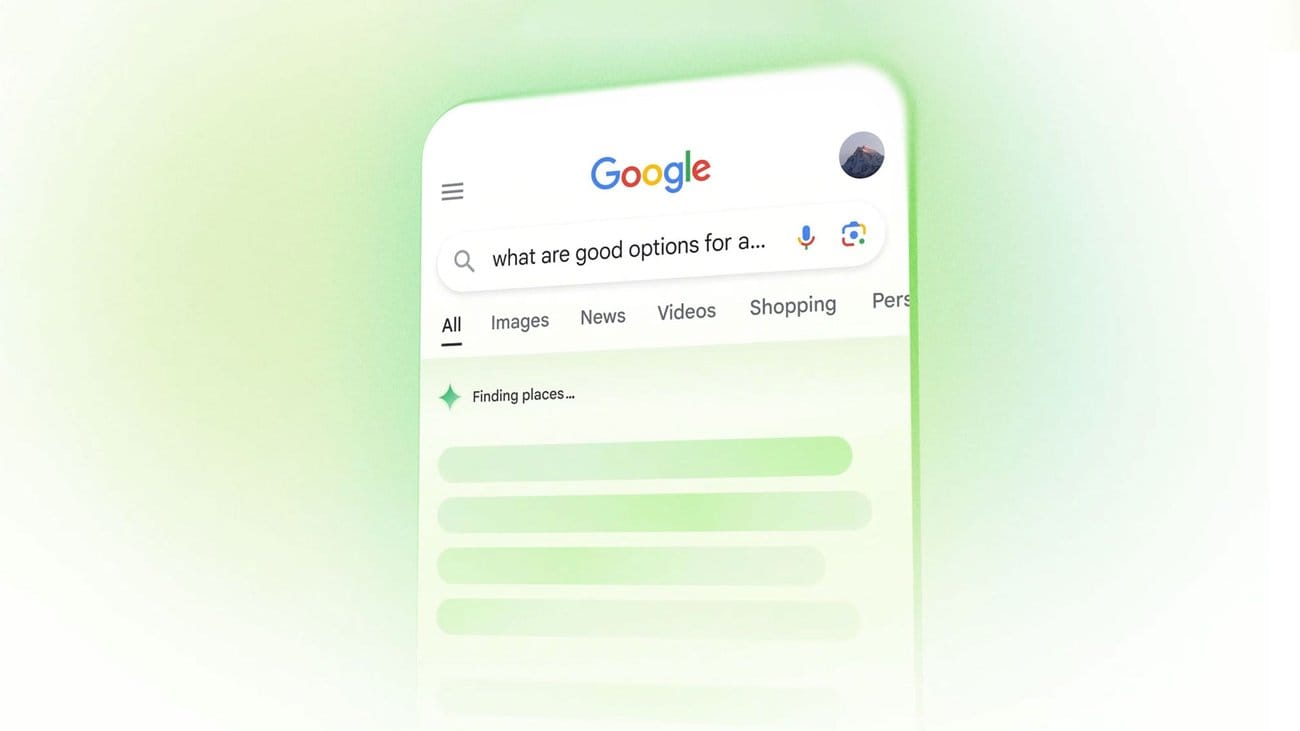Ranking First on Google SERP Isn’t Enough Anymore
Google AdsRanking #1 on Google isn’t enough anymore. With AI Overviews, zero click searches, and AI Max campaigns reshaping how people shop, success comes from being part of the conversation, not just winning ad position. Learn how e-commerce brands can adapt and thrive in this new era of Google Ads.

If you’re running Google Ads for your e-commerce brand, you’ve probably been told that the holy grail is showing up at the very top. Pay enough, optimize your campaigns, and boom, you’re number one. But here’s the uncomfortable truth: that doesn’t guarantee your brand will be remembered.
Most advertisers are playing the wrong game. They’re fighting for position when the real power lies in being part of the conversation.
Search Is Shifting Into Dialogue
Video by Google
Over the past months Google has been rolling out AI-powered features that are quietly rewriting how search works.
The numbers tell the story:
- AI Overviews now appear in more than 50% of all search results. Industry experts call this a major turning point in the evolution of search.
- These overviews summarize information from across the web and display it right at the top. That means your audience could get what they need before they ever see your ad.
- AI Mode allows shoppers to type longer, natural questions and get conversational answers that consider their preferences, budget, or even images they upload.
- AI Max for Search campaigns layers AI-driven matching, ad optimization, and creative customization on top of traditional search ads. It helps brands show up in queries they weren’t targeting before, which means being part of the actual conversations shoppers are having.

This changes everything. People are not just clicking the top link anymore. They’re reading summaries, comparing options, and sometimes making decisions right inside the search box.
The Rise of Zero-Click Searches
In 2024, nearly 60% of Google searches ended without a click. That number is only expected to grow as AI features expand. This “zero-click” trend means:
- Prospects can get answers directly from the search results page (SERP).
- They don’t have to visit multiple websites to research and compare before making a decision.
- AI Mode even allows follow-up questions, product comparisons, and in some cases, direct purchases through Google Pay.
In other words, your website may never get the click — unless you’re already part of the conversation.
The Dinner Dress Story
Let’s put this into context.

Two e-commerce brands are selling dinner dresses.
- Brand A does what most advertisers do. They pay to appear at the top for generic searches like “red dinner dress” or “buy dinner dress online.” Their ad is polished and perfectly positioned.
- Brand B takes a smarter approach with AI Max. They write product descriptions that reflect actual occasions. On their site you’ll find:
- “Perfect dinner dress for a first wedding anniversary”
- “Elegant evening dress under $200, ideal for milestone celebrations”
They also encourage reviews where customers share stories of how they wore the dress for anniversaries, birthdays, or romantic dinners.
Now imagine a shopper types: “Best dinner dress for my first wedding anniversary under $200”
Who do you think the AI highlights? Not Brand A. Their ad doesn’t match the context. But Brand B? Their descriptions and reviews speak directly to that intent. The AI pulls them into the conversation, which means the shopper can decide right there without clicking around.
That’s what being “in the conversation” looks like.
Why Product Descriptions Are Your Secret Weapon
Most advertisers underestimate the power of product descriptions.
Titles are limited by Google’s strict character counts. Descriptions give you room to tell a story, provide context, and speak the way your customers actually talk.
If your description is bland, like: “14k gold necklace, 18 inches” Google’s AI has nothing to work with.
But if your description says: “14k gold necklace with an adjustable 18-inch chain, a timeless choice for anniversaries and milestone birthdays, designed to be a meaningful gift”
You’ve given AI the context it needs. When someone searches for “anniversary necklace under $200,” your product is more likely to be included in the summary.
This isn’t about stuffing in keywords. It’s about anticipating how people naturally describe their needs. Think in terms of occasions, emotions, and outcomes — not just specs.
The data backs this up: queries with eight words or more are seven times more likely to trigger AI Overviews.
Why This Matters for E-commerce Advertisers
Here’s why this shift is critical right now:
- Shoppers are asking bigger questions. It’s no longer just “buy dress online.” It’s “What’s the best affordable dress for my first anniversary dinner?”
- Google’s AI is choosing who to highlight. If your descriptions and reviews don’t connect with specific queries, you’ll be invisible even if you’re paying for ads.
- Presence is the new metric. Position still matters, but trust is built inside conversations.
This doesn’t mean stop bidding on ads. It means rethink how your ads connect to the real questions people are asking.
And that’s exactly where Google’s newest tool, AI Max for Search Ads, comes into play. If the first shift is realizing that rank alone won’t cut it, the next step is figuring out how to show up in the conversations that matter.
AI Max is Google’s boldest move toward that future. It’s built to expand beyond keywords, connect your brand with conversational queries, and help you reach audiences you didn’t even know you were missing.
In my follow-up article, I’ll break down how AI Max works, share the performance data behind it, and show you the smartest way to test it without losing control.


Comments